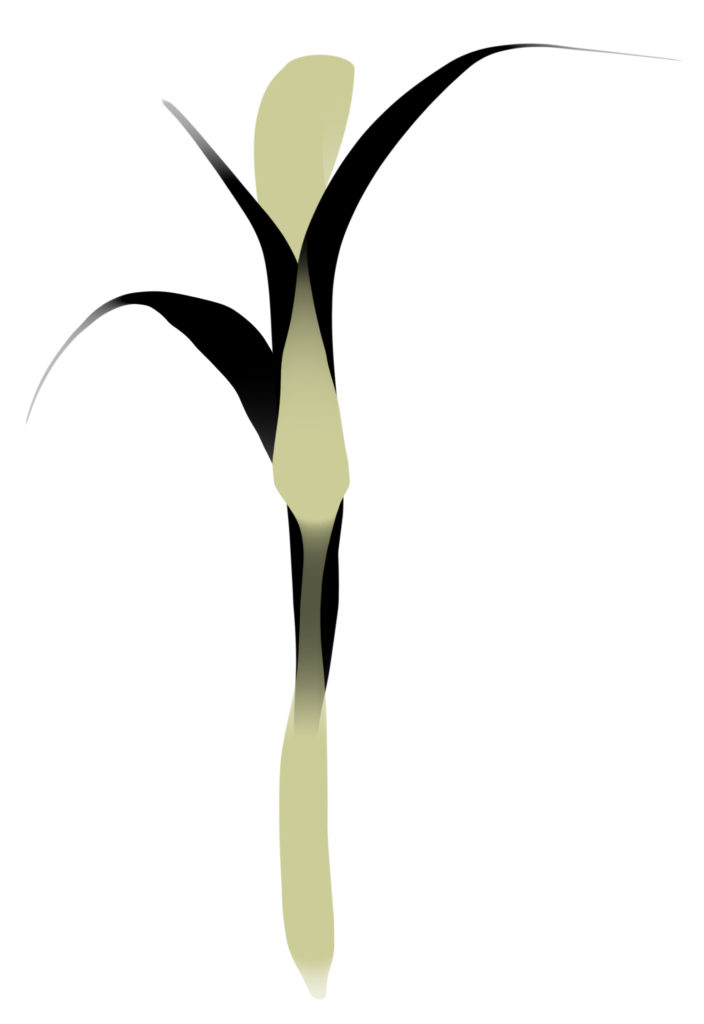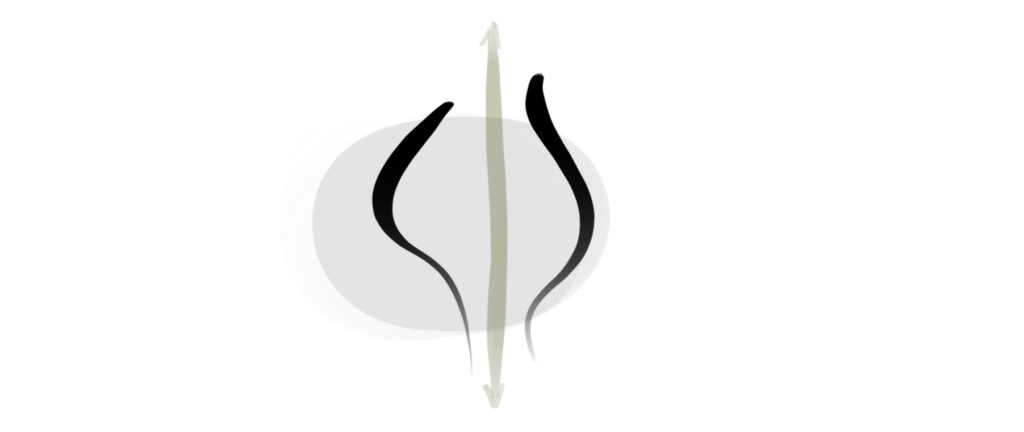Under all distraction and perceived fragmentation lies a coherent whole.
In any moment, under pressure–at a wall ready to draw, or in the midst of an argument with a loved one–when we want desperately to understand of things, we can inquire into an underlying order. “How does this make sense?”
We only need to look into the woods to understand this principle. Once on a mini “solo” retreat, I remember the feeling of awe when looking closely into a patch of richly entwined roots that lay with mushrooms and moss and twigs and insects and lichen and leaves and bark and earth. They represented pieces of the forest, all jumbled into one spot. And, at the same time, there was absolutely no separation between the parts. There was a perfectly natural co-existence of life forms in simultaneous decay and growth.
Another way to explain coherence was presented by physicist and dialogue pioneer David Bohm: “Ordinary light is called “incoherent,” which means that it is going in all sorts of directions, and the light waves are not in phase with each other so they don’t build up. But the laser produces a very intense beam which is coherent. The light waves build up strength because they are all going in the same direction. This beam can do all sorts of things that ordinary light cannot.”
This is probably where my practice starts to lean towards the mystical, because I correlate coherence with a belief in universal oneness.
Aikido master Richard Moon, writes: “The universe is one system, a unified field of energy of which we are a part. When we feel ourselves a part of the universe, we feel where we are in the flow of Creation, we naturally experience a connectedness with the earth. Feeling this connection effortlessly heals the isolation that characterizes modern life. Life becomes connectedness and we find ourselves in empowered alignment with the universe as it unfolds.”
In applying this principle at the wall, sometimes I will draw a large curve or shape, seemingly out of nowhere. No one in the room has said “And it all starts with a large circle…” But in the moment, I am likely feeling ungrounded and am seeking assurance, and this is where coherence comes in.
I quiet the rambling mind, look at and into the wall, and have a quick conversation with that surface: “What is your story today? What wants to be seen on your gleaming white surface?” Obviously the wall does not talk back. But… in a way it does. I receive some sort of impulse towards a certain gesture, a direction, even a color. And I go from there.
I trust that the mark will fit with all marks to come, that the mark is originating from some deep unseen place of aligned intent – like Bohm’s laser – and, through my hand, will manifest into something that makes cognitive and aesthetic sense.
There is a similar alignment to be found in conversation.
If I find myself ramped up and ranting about how someone has “done me wrong!”, latching onto the face value of the exchange will likely limit my growth. Instead, seeking the coherence in the situation can increase compassion and development. “How and why are these things playing out in this way, at this time?”
Putting ourselves in someone else’s shoes is a first step to shifting awareness about where that person might be coming from. Trying to see the entire exchange from above can enhance perspective. And seeking sense in the underlying root causes can further increase understanding.
We have to see a larger, more entwined, interconnected picture to be able to discern any one fragment.
If I draw isolated elements, it’s as if I display an arrangement of rocks collected at the beach. They’re beautiful, and dismembered from their original context. (And I do this all over my home!) When scribing, we do re-contextualize elements all the time, and that is where coherence can aid us; we can re-order with our will and impose structure on content and/or we can inquire into a natural, whole emerging state that is seeking birth.
Seeking coherence demands a lot of trust.
Whether it be a picture on a wall or an awkward conversation with a coworker–trust encourages us that this picture or conversation is exactly what is meant to unfold in this window of time. It’s a piece of a greater context, not yet known.
Influences to this thinking: Bill Isaacs, Barbara Cecil, Glennifer Gillespie, Beth Jandernoa – and this post is for the mighty, always coherent Alicia Bramlett




